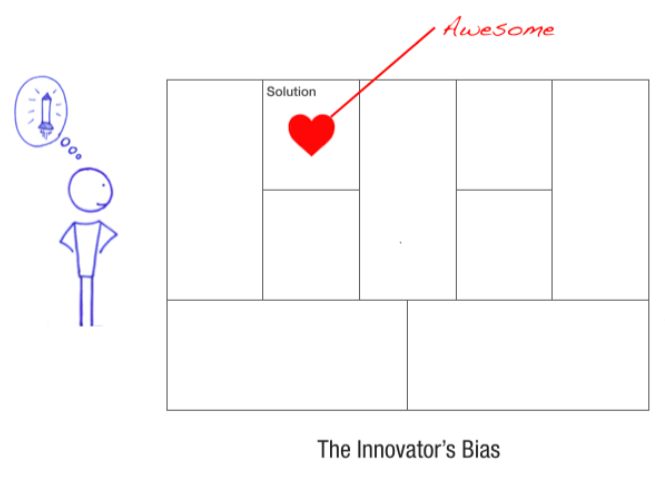Creating a marketing plan for your business, let alone executing said plan, can be incredibly intimidating.
And it’s no surprise why.
You’re likely overwhelmed by the marketing tools available, social media platforms, easy website building businesses, search engine optimizations, analytical frameworks, and email systems to deliver your content…all boasting about the possibility of growth.

Photo by rawpixel.com on Unsplash
The truth is, they’re right…it works, all of it. But you’ve also probably tried some of these tools in the past, and haven’t seen the return you were hoping for. This leaves you feeling like your solution/service isn’t wanted in the marketplace, or maybe that you’re not cut out for this.
Let me encourage you:
No one knows your business like you do.
The problem is, you haven’t been equipped to think about your marketing in a way that works FOR YOU and YOUR CUSTOMER.
Fortunately, if you’ve followed The Lean Canvas to build your business model, you’ve already done over 50% of the work.
If you haven’t built out a Lean Canvas and don’t know where to begin, Ash Maurya’s book, Running Lean will help you get started on the right foot.
Your Solution isn’t what you are selling

Illustration by Love The Problem on their post “The Different Worldviews of a Startup”
You think your solution is awesome, you bleed your solution, you LOVE your solution…and rightly so, after all it’s why you are in this business in the first place.
“We spend a disproportionate amount of time talking about the uniqueness of our product features or its underlying technology breakthroughs.” — Ash Maurya
The issue is, your customer doesn’t believe this, how are you any different than a snake-oil sloshing con-man? Your customer hasn’t made the jump yet, connecting your solution to their problem.
Focusing on the Problem
Your customer is consumed with the problem blocking them from meeting their end goal. They aren’t really in a space to care about how you fix the problem, but rather that you CAN fix their problem.
“No one cares how much you know, until they know how much you care” — Theodore Roosevelt
Empathy is the missing link that bridges the gap between you and your customer. To empathize with your audience, your marketing should be more about Your Customer and Their Problem than it should be about you or your solution.
So how do you actually use the Lean Canvas to empathize with your Customer?
Most all marketing boils down to 3 elements no matter what platform you use to execute your plan. These are:
1) Compelling Headline
2) Expanding Subheadline
3) Powerful Call to Action
The Compelling Headline

Illustration by Love The Problem on their post “The Different Worldviews of a Startup”
The first hoop a marketer must jump through is getting your customer’s attention. Their time is valuable and so is yours, so let’s not waste it and get to the point by delivering a Compelling Headline…the Promise you deliver.
The Promise, aka your Unique Value Proposition, isn’t your solution but rather the result of using your solution. A great way to discover your UVP is by asking: How does my solution enable my customer?
Here’s a few guidelines for your Compelling Headline:
• Be clear and to the point.
• Cover what you offer and why it matters.
• Use actionable words geared around value.
• Your headline is your pitch, keep it short.
Let’s say you were to offer a cloud-based billing service, and your customer’s problem is getting paid late, or getting charged large transaction fees. These problems are consuming your clients time, and it’s stopping them from focusing on growing their business (their goal).
Two great examples of your no-nonsense Headline would be:
Helping You Earn More So You Can Grow Your Business.
Getting Paid Faster So You Can Focus on Your Business.
That just sounds so good, who doesn’t want to get paid faster or earn more?!
The Expanding Subheadline
The expanding subheadline builds a description around the Promise you established in your Headline. This needs to describe the Problem your clients face, empathizing with with their pain, but most importantly, persuading them that this isn’t the way things have to be.
Here’s a few guidelines for your Expanding Subheadline:
• Be descriptive and persuasive.
• Empower your audience to take action.
• Explain what they are to do next.
Drawing from our billing service example, an Expanding Headline could look like this:
You deserve to be able to give your business 100% instead of being bogged down by endless accounting and hoping you get paid on time. Get ready to bring in a steady flow of income directly into your bank! Request a free demo to experience our hassle-free billing!
The Powerful Call to Action
Your Powerful Call to Action is the bow that wraps up everything you’ve promised. Usually your CTA is a button that encourages a click through into your lead funnel. Your CTA should use a contrasting color to draw your prospects attention, with a short summarized phrase. The CTA should always be direct AND actionable, avoiding generic “learn more” or “sign up” phrases.
“So, what button copy should you use? Click here, buy now and order now are a few call-to-action texts that you see around. I’ve found that generic phrasing, like the words above, don’t really impact conversionrates by much. If they do, then there are other elements on your webpage that need to be tested.” — Neil Patel
Tips for a Powerful Call To Action
• Use relevant contrasting colors.
• Use action oriented phrases, avoiding being to vague or generic.
• Reiterate the CTA throughout your content, give your audience multiple chances to jump into your funnel.
Returning to our billing solution, we would craft a Powerful CTA like this:
Create Your First Invoice
Experience Hassle-Free Billing
Try our free demo
SUMMARY
By using the Lean Canvas, you can truly empower your marketing, simply by switching focus from your Solution to your client’s Problem. This allows you to not only connect with a prospective client, but to bring the most Value to the table. By using these methods, you extract the most Value from your business and position your Solution for success.

